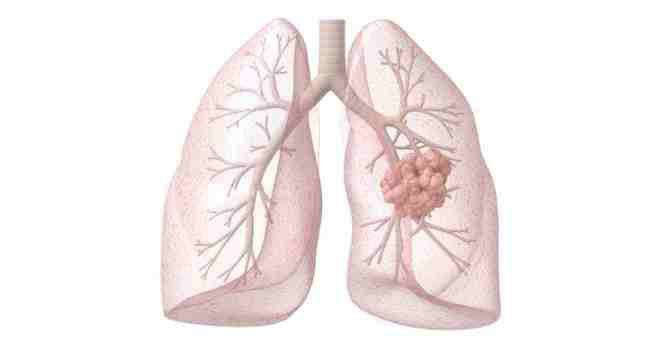Signs and symptoms of lung cancer

Lung cancer is the most common type of cancer that mainly affects aged adults (above 70 years). The incidence of lung cancer in people younger than 40 years of age is low, but with age, the risk of this cancer increases drastically. Smoking is one of the main causes (almost 90% of all cases) of lung cancer, but people who have never smoked can also develop this disease.
Lung cancer usually shows no signs and symptoms in its early stages and may take years to develop. And when symptoms begin to appear, it usually means that the disease is advanced or has spread to the other parts or organs of the body. Dr. Gyanendra Agrawal, Senior Consultant, Respiratory & Critical Care unit, Jaypee Hospital, Noida, sheds light on the most common symptoms of lung cancer usually observed in people –
A chronic cough – A cough that normally doesn’t go away within two to three weeks time or gets worse (intense). It is found that a long-standing cough causes pain in the chest while coughing.
Coughing up blood – Some lung cancer patients are found to cough up rust-colored sputum (mucus or phlegm) that contains blood, which is one of the red flag signs of lung cancer. about what the color of your cough/mucus/phlegm says about your health
Difficulty in breathing – Feeling shortness of breath, wheezing (breathing with noise) or chest congestion are all common signs of lung disease, which could also indicate underlying lung cancer.
Facial and vocal changes – There are significant changes in the voice, such as your voice becomes hoarse or there is a harsh sound while breathing. Also, swelling of the face, arms and neck may also be observed in people suffering from this disease. Known as stridor, changes in the tone of the voice or abnormal breathing can be actively looked up as a key sign of lung cancer.
Recurring infections – Due to compromised immunity and a lack of energy, the chances of getting sick are higher in these patients. In people suffering from lung cancer, infections of the respiratory system like bronchitis tend to recur. In some cases, accumulation of abnormal fluid in the chest also known as pneumonia could be a sign of lung cancer. If a person has long-standing asthma or any pre-existing lung disease and experiences any new symptoms like jaundice, seizures, etc, then it could be a sign of lung cancer.
Other common symptoms that usually occur in the later (advanced) stages of lung cancer include –
Bone pain – Pain in the joints, back and hips is common when cancer progresses to other parts of the body. A bone fracture (which is not due to any injury or accidents) may also be reported in some cases.
Neurological symptoms – In case the cancerous cells migrate to the nervous system, changes in neurological functions may also become noticeable. These include headaches, dizziness, seizures, balance problems, altered behavior and numbness in the legs and arms.
Swellings on the body – In later stages of the disease, lumps in the neck region and above the collarbone are seen due to cancer spreading to the lymph nodes (immune cells present all over the body) and the face. Hence if you experience any disproportionate swelling in the upper body namely the neck, face, and upper arm, then consult your doctor immediately.
Most of the symptoms listed above can be caused by other clinical conditions other than lung cancer. Early diagnosis and prompt treatment can make a world of difference to the prognosis, so it is important that you seek medical attention as soon as possible if you notice any of the signs of lung cancer.
Courtesy by : Daily Hunt



